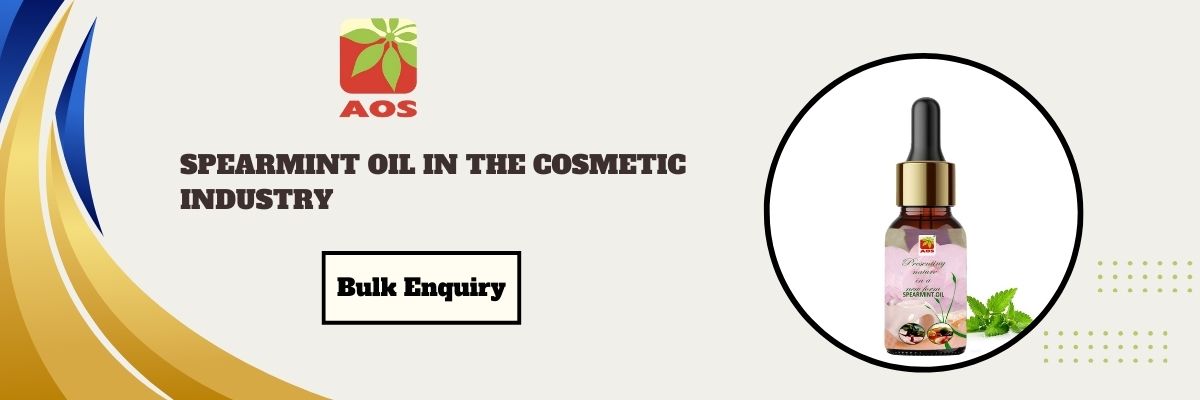
n recent years, the cosmetic industry has seen a growing shift toward natural and plant-based ingredients Spearmint Oil in Cosmetic Industry. Among these, spearmint oil has emerged as a popular and versatile addition to skincare, haircare, and personal care products. Known for its refreshing scent and therapeutic properties, spearmint oil offers both functional and sensory benefits that align with consumer demand for clean, effective, and sustainable beauty.
What is Spearmint Oil?
Spearmint oil is an essential oil extracted through steam distillation of the flowering tops of the Mentha spicata plant. Unlike peppermint oil, which has a higher menthol content, spearmint oil is milder and sweeter, making it ideal for cosmetic applications. It contains compounds such as carvone, limonene, and cineole, which contribute to its distinct aroma and therapeutic effects.
1. Skincare Products
Spearmint oil is commonly used in facial cleansers, toners, and creams due to its antibacterial and anti-inflammatory properties. It helps to:
Its ability to balance sebum production also makes it suitable for oily and combination skin types.
2. Haircare Solutions
In shampoos and scalp treatments, spearmint oil offers a soothing and invigorating experience. It promotes blood circulation in the scalp, which may support healthy hair growth, while its antimicrobial action helps combat dandruff and scalp irritation.
3. Oral and Lip Care
Spearmint oil is a common ingredient in lip balms, toothpastes, and mouthwashes due to its pleasant taste and refreshing aroma. Its natural antiseptic qualities make it ideal for promoting oral hygiene without the need for harsh chemicals.
4. Body and Personal Care
From natural deodorants to body washes and lotions, spearmint oil adds a revitalizing scent and a gentle tingling effect that consumers find energizing. It is often blended with other essential oils to enhance aroma and functional benefits.
Sustainability and Market Trends
With the rise of clean beauty and sustainability, spearmint oil fits well into eco-conscious brand narratives. It is biodegradable, plant-based, and can be sustainably sourced, especially when cultivated through responsible farming practices.
Recent market trends show an increase in demand for spearmint oil in the natural cosmetics segment, particularly in products targeting millennials and Gen Z consumers who prefer cruelty-free, vegan, and naturally-derived ingredients.
Safety and Regulatory Considerations
While spearmint oil is generally safe for cosmetic use, it must be used within recommended concentrations. Overuse can lead to skin sensitivity, particularly in leave-on formulations. Cosmetic brands must also comply with INCI (International Nomenclature of Cosmetic Ingredients) labeling and regional regulatory guidelines, such as those set by the EU Cosmetic Regulation and the FDA.
Key Takeaways
Associate products :-
